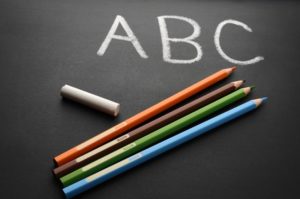 If you are a parent of a high school student who will be going off to college soon, or you are starting college yourself, there’s a good chance you’re thinking about applying for financial aid. According to the National Center for Education Statistics, 66% of all undergraduates received some form of financial aid in 2007—08.
If you are a parent of a high school student who will be going off to college soon, or you are starting college yourself, there’s a good chance you’re thinking about applying for financial aid. According to the National Center for Education Statistics, 66% of all undergraduates received some form of financial aid in 2007—08.
Many families are confused about which assets are taken into consideration when a student’s financial aid eligibility is calculated. This post will help clarify which assets are considered in the calculations. It’s important to note that assets belonging to the child are weighted more heavily in the calculations than are assets belonging to the parents, meaning that generally it is better for assets to be owned by the parents rather than the child.
Applying for financial aid starts with the Free Application for Federal Student Aid (FAFSA). Based on the information you provide on the FAFSA, the U.S. Department of Education will calculate what’s known as your Expected Family Contribution (EFC). Your family’s EFC will be subtracted from your school’s Cost of Attendance (COA) to determine your student’s eligibility for need-based aid.
If your student plans to attend a private college, be prepared to provide additional information to the school when applying for financial aid. Private schools often take into consideration assets that are not considered on the FAFSA.
So which assets affect a child’s financial aid?
Cash and Investment Accounts
Cash and investment accounts are counted in the financial aid calculations.
Trust Assets
Assets held in trust are included in the financial aid calculations. This is true even if access to the trust assets is restricted.
Coverdell Education Savings Accounts (ESAs)
Funds in a Coverdell ESA are counted in the financial aid calculation. Coverdell ESAs may be owned by the child or the parents, and the funds are treated as an asset of the account owner.
UTMA/UGMA Accounts
Money in UTMA/UGMA accounts does affect a child’s financial aid. For purposes of financial aid calculations, these accounts are considered the child’s assets.
529 Plans
529 plans are counted as assets on the FAFSA, but they are considered the parents’ assets rather than the child’s.
Retirement Accounts
Retirement accounts such as IRAs and 401(k) accounts are not a factor in financial aid. However, if you withdraw any money from your retirement accounts, it will be counted as untaxed income and will need to be reported on the FAFSA.
Annuities
Annuities are not counted on the FAFSA as assets that affect financial aid.
Real Estate
The FAFSA does not ask about any equity you may have in your primary residence, and it is not considered in the financial aid calculations. However, second homes and investment properties are considered assets that affect financial aid. Although the FAFSA does not ask about your primary residence, some private colleges will ask and will factor the value into their financial aid calculation.
Businesses
Small businesses that are owned by the family are not counted as assets when calculating financial aid. For the purposes of filling out the FAFSA, a small business is one with fewer than 100 full-time employees. In order for the business to qualify for the small business exclusion, the family must own a majority of the business. If the small business is a partnership and the family owns half the business, then the exclusion does not apply, and the business must be reported on the FAFSA as an asset.
Personal Property
Personal property such as vehicles, computers, boats, clothing, and furniture are not considered when determining financial aid eligibility.
Applying for financial aid can seem like an overwhelming task. The Federal Student Aid website can help guide you through the process and answer any questions you might have. If you need additional assistance, you should consult your child’s school counselor or a financial advisor.
Photo: Tax Credits
